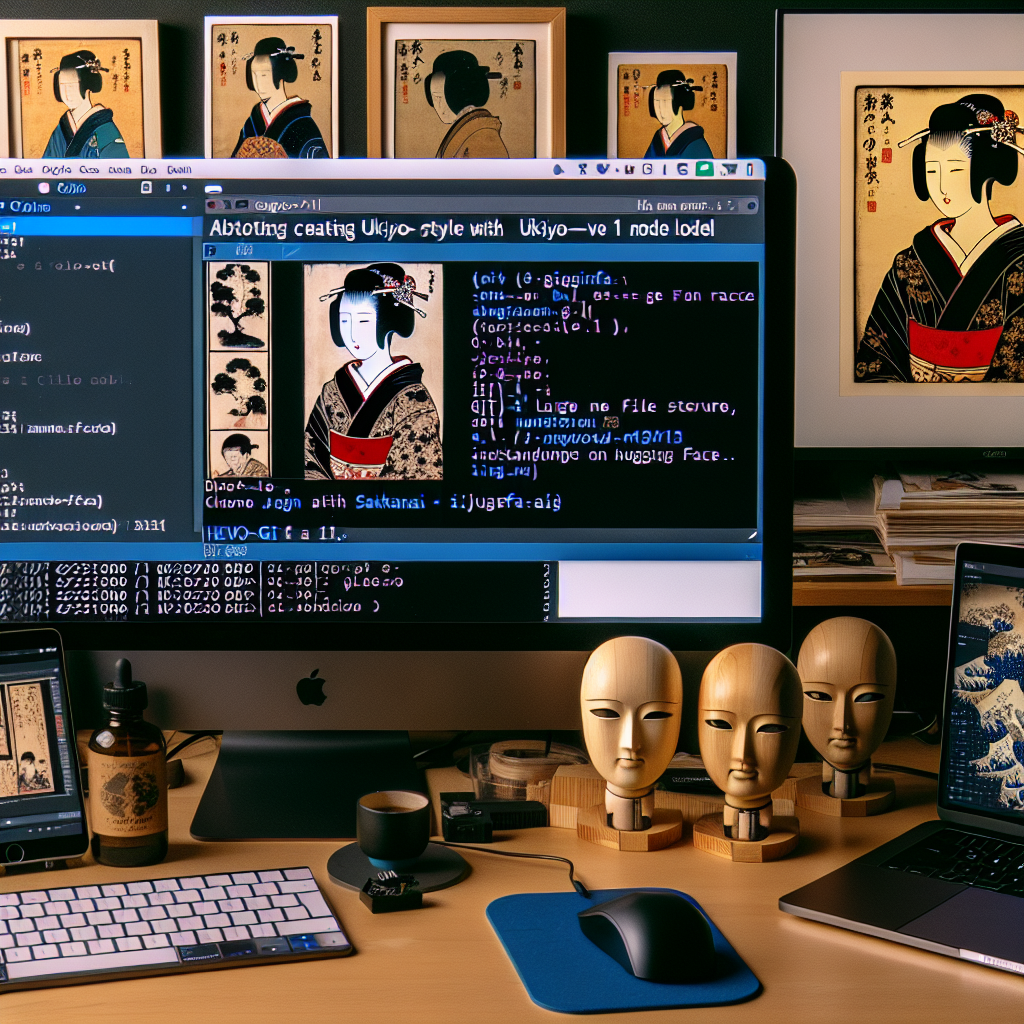If you’ve ever been captivated by the beauty of traditional Japanese woodblock prints and dreamt of generating your own art in that style, you’re in luck! The Evo-Ukiyoe-v1 model developed by Sakana AI allows you to harness the power of text-to-image generation to create stunning Ukiyo-e pieces from simple prompts. This blog will guide you step-by-step on how to get started with this experimental model.
Step 1: Cloning the Model Repository
First things first, you need to clone the model. Think of this as creating a copy of a beautiful canvas where you can start painting. Open your terminal and run:
git clone https://huggingface.co/SakanaAI/Evo-Ukiyoe-v1
Step 2: Installing Git Large File Storage (LFS)
Evo-Ukiyoe-v1 uses Git LFS to manage large files efficiently, similar to a steamboat ensuring that all your resources are transported smoothly along the river. If you don’t have Git LFS installed, do so with the following commands:
sudo apt install git-lfs
git lfs install
Step 3: Setting Up Your Conda Environment
Creating a dedicated Conda environment for the project helps isolate the dependencies – think of it as preparing a clean workshop before you start crafting your masterpiece.
conda create -n evo-ukiyoe python=3.11
conda activate evo-ukiyoe
Step 4: Installing Necessary Packages
Navigate into the directory of your cloned repository and install the required packages. This is like collecting all the brushes and paints you need to create your artwork:
cd Evo-Ukiyoe-v1
pip install -r requirements.txt
Step 5: Running the Image Generation Code
Now comes the exciting part! You’ll run some Python code that takes your creative prompt and translates it into a beautiful Ukiyo-e styled image. Consider this like the moment you begin painting on your canvas:
from evo_ukiyoe_v1 import load_evo_ukiyoe
prompt = "着物を着ている猫が庭でお茶を飲んでいる。" # A cat in a kimono drinking tea in the garden.
pipe = load_evo_ukiyoe(device="cuda")
images = pipe(prompt + "輻の浮世絵。超詳細。", negative_prompt='', guidance_scale=8.0, num_inference_steps=40).images
images[0].save("image.png")
This snippet of code sets your specified prompt and parameters to generate an exquisite image. The model will process it and save the resultant artwork as `image.png` for you to admire.
Troubleshooting Common Issues
While everything should run smoothly, here are some common issues you might encounter and how to resolve them:
Issue: Git clone fails
Solution: Ensure your internet connection is stable and try again. If the URL has changed or is outdated, check the model’s page for the freshest link.
Issue: Missing package errors
Solution: Double-check that you ran `pip install -r requirements.txt` correctly. If certain packages are still missing, try installing them individually.
Issue: CUDA errors
Solution: Make sure that your system supports CUDA and it is properly installed. You may have to switch to CPU mode if your hardware does not support it.
For more troubleshooting questions/issues, contact our fxis.ai data scientist expert team.
Conclusion
Creating Ukiyo-e style images using the Evo-Ukiyoe-v1 model is not just accessible, it’s an exciting experience where technology meets traditional art. By following the steps outlined in this guide, you can start your artistic journey in the world of beautiful Japanese woodblock prints. Happy creating! 🎨

